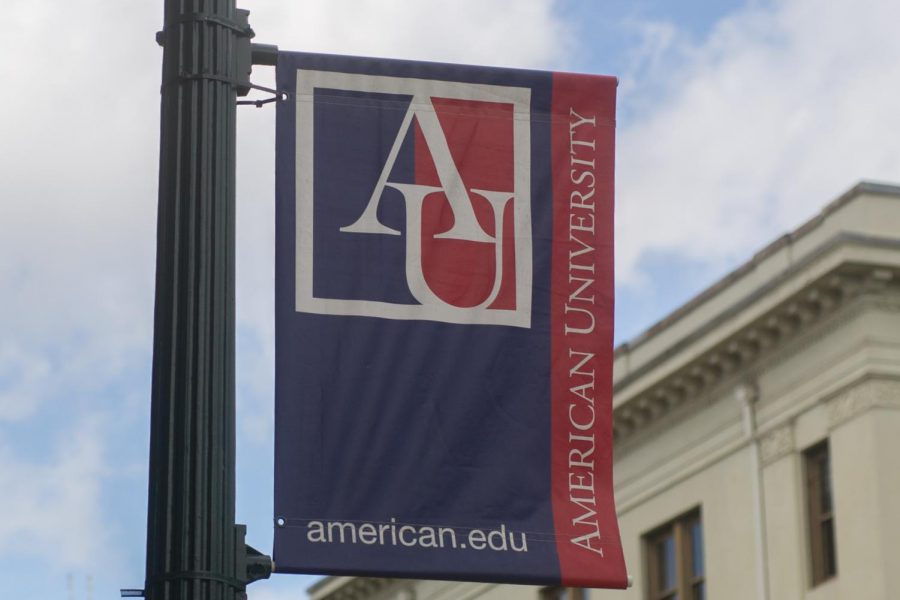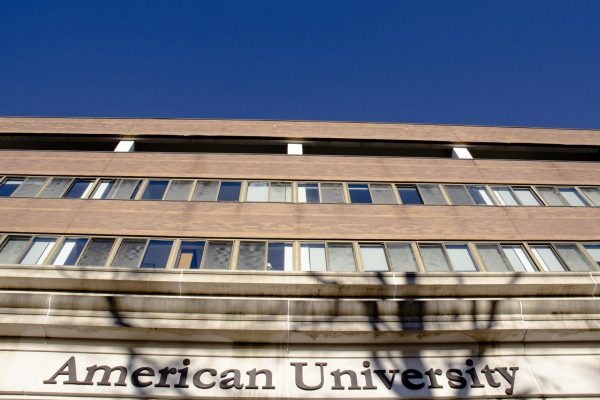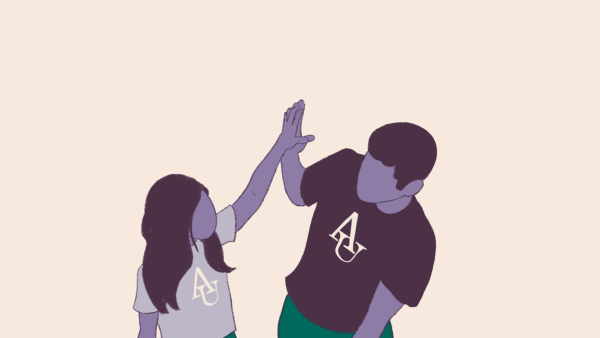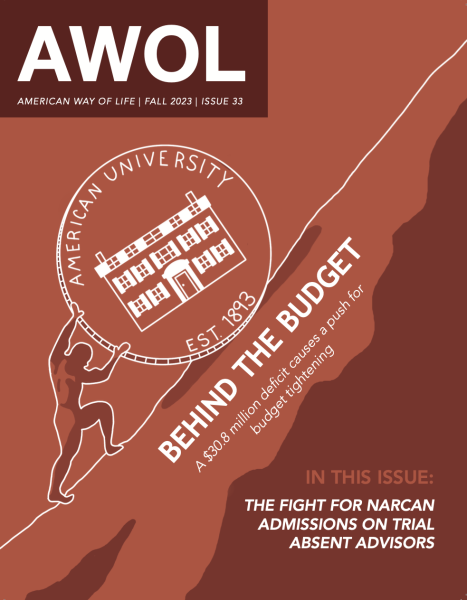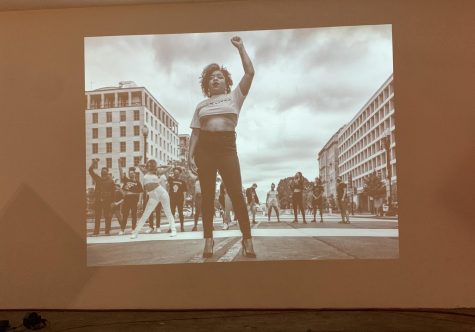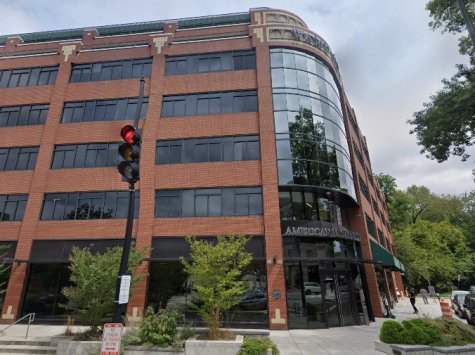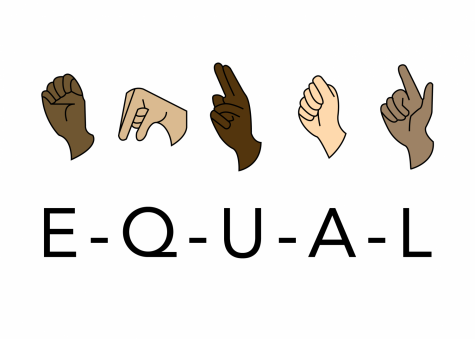New housing landscape, hybrid classes as AU preps for semester during pandemic
AWOL and The Blackprint search for answers as AU reveals fall semester plan
American University unveiled its new plan Tuesday with the goal of transforming the fall semester into a socially-distanced, pandemic-proof experience while salvaging education with a mixture of in-person and online classes and extracurriculars.
The plan, called AU Forward, says that the main priorities are protecting the health and safety of the AU community, both in residential halls and the rest of campus, while providing education and other opportunities expected by students.
AWOL and the Blackprint attended a press conference Tuesday afternoon to gather information beyond the 16-page plan about how students can expect the upcoming semester to look. AWOL organized these responses into four categories to make this information easily searchable: tuition and housing, safety and health, academics, and employment.
Tuition and Housing
Will tuition change? Will the cost per credit hour change given that several courses will now be online?
Peter Starr, dean of the college of arts and sciences, said that AU’s current plan includes a 3% raise in tuition, which he said would be covered for students that receive financial aid. He said the increase would support funding for financial aid for students with demonstrated need as well as to allow for Covid-19 testing.
Karen Baehler, who teaches graduate students at AU, said that AU has offered several graduate programs that are “entirely online” for the past several years. AU has historically charged the exact same amount for those programs as the face-to-face courses because the cost is the same whether online or in-person, she said.
Baehler added that faculty who teach online courses have a different perspective on the idea that online classes should cost less than in-person courses.
How many students will be able to secure on- and off-campus housing that the university provides?
Christopher Silva, director of housing, said that on-campus housing will include about 2,300 beds, and off-campus partners will offer approximately 500 additional beds.
A lot of students will have to find off-campus housing. Is there any support for those students that now have to find off-campus housing when they previously were promised on-campus housing?
Silva pointed to the off-campus housing section of the Housing and Residence Life website and said that they have added to it to support students.
In terms of what the university is doing, Silva said there are hotels and apartment buildings that will have spaces available for AU students. AU will operate the apartment building spaces, whereas the hotels will not be AU operated.
He said that he’s seen housing prices in D.C. fluctuate, some increasing and some decreasing, as schools announce their decisions.
“We’ve tried to find the best and most affordable options for students that are out there, based on what is available,” Silva said.
The price will not be the same as on-campus housing but will follow a pattern comparable to on-campus housing based on services in those buildings.
The locations that have been found were based on availability and proximity to public transportation and to services, according to Silva.
Are you taking Metro hours and student class times into consideration? What about students who have classes that end later?
The university has not taken this into consideration when looking at off-campus housing locations, but after reporters asked, Silva said that they will be.
WMATA is undergoing a three-stage plan in response to the pandemic. In the fall, WMATA is expected to enter the “managed re-entry” phase that will include bringing all bus lines back as well as doubling the current rail service.
The tentative plan has 10-minute intervals between trains arriving at the station. Trains will run 5 a.m. to 9 p.m. on the weekdays and 7 a.m. to 9 p.m. on weekends.
Buses will be running from 4 a.m. to 12 a.m. daily and fares will be waived.
What will the black living community look like, and is that still offered by AU?
In an emailed response to AWOL and The Blackprint, AU spokesperson Stacie Burgess said that the university remains committed to supporting the needs of Black students currently in attendance as well as new students enrolled in the fall. The university will still focus on providing students with an “affirming space” that provides “breathing space” and “a greater sense of agency and community for Black students,” she said.
Black affinity housing will be offered in Hughes hall rather than Roper, according to Silva. This allocation of housing would cover at least one floor of Hughes. Da Silva said he “looks forward” to talking to students.
Is there going to be a maximum amount of space for Black affinity housing?
Da Silva said that it will depend on the amount of students per class that secure on-campus housing.
Is the university concerned that race-relations may be even more strained after the university committed to having a Black living-learning community as its own designated location?
“The perception and concern that students have living in a building that previously they were expecting one building, now they’re expecting the other building,” Da Silva said.
He said he was in communication with students who were involved in the planning for Black affinity housing, and that the university is discussing those concerns with students.
He said that the limitation in changing to single occupancy for dorms as well as the expressed desires of Black students for this housing option were taken into account in the decision to expand Black affinity housing across dorms.
How is my financial aid being impacted?
Financial aid will not be impacted at all. Students who are living off-campus will have the same financial aid package as if they were going to be living on-campus.
Brian Lee-Sang, the director of financial aid, said that students should all receive their financial aid packages by July 1. He suggests that all students with concerns that have come up due to the pandemic should reach out to the financial aid counselor.
How will the additional residential spaces be furnished?
Da Silva said this depends largely on the owners of the off-campus housing providers and that students should expect “hotel-like” furniture.
How much money is being dedicated to financial aid?
The university will be using all of the tuition increase, $13 million, and putting it into financial aid packages.
Safety and Health
How will social distancing/masks be enforced?
Wendy Boland, co-chair of the AU Forward plan and interim dean of graduate studies, said that there will be no direct enforcement of the social distancing and face covering requirements. She said that if people are not abiding by these rules and have gone through trainings, then there will be the ability to take action through the student conduct code.
She also said that resident assistants and American University Police Department would have no involvement in the enforcement of the current plan as of right now.
Lisa Freeman, director of residential life, emphasized that RAs would not be responsible for making sure students are wearing face coverings and practicing social distancing.
“We have no intention for RAs to police students,” she said. “It’s a community responsibility.”
Will students have to pay the $20 copay to receive Covid testing? Will that fee be waived?
Lisa Stark, spokesperson for AU, said that if a student goes to the health center with any kind of illness, they would still have to pay the $20 copay. She noted that students would not be required to pay for the testing.
“Finances are not going to be a barrier for anyone coming in,” Stark said. “The university is committed to making sure that if you need to come in, and you need to get help, and you need to get tested, and you’re ill, finances are not going to stand in the way and students should not worry about that.”
She said that this plan is still under review.
What does D.C. COVID testing look like?
There are currently multiple testing sites across the District that offer free testing, including free antibody testing.
Academics
How are professors being trained for this blended format?
The university has hired teams of designers to help faculty create curriculums that can be applied both online and off, Boland said. She was not specific on what the team of designers would be doing. Faculty are still creating their curriculum.
AU is incorporating student feedback from the Spring 2020 semester into how faculty prepare for the Fall 2020 semester format, according to Boland. There is also a system to pair up professors who are experienced in teaching online with inexperienced professors.
How does the blended format work in practice?
The process for deciding how each class will run will be based on how many students return, which will be discovered through a survey to students to understand their needs and whether or not they will be returning.
Once that is done, faculty can start creating curriculum in this blended format. They will reach out to students to explain what that specific class structure will look like. Each class will be different and cater to the needs of the students in the class.
There is no universal plan for every class at the moment.
There will be no exact number of face-to face nor online classes. However, the university is emphasizing to professors that they should cater to live synchronous sessions because student feedback from the spring says that is what works the best.
Boland said she predicts that most classes will have a portion that is asynchronous lectures that students can rewatch over and over again, but each class will definitely include either an in-person or live online class.
It’s possibility that students returning to campus might have classes split into two groups, if they large enough, where Group A might have in-class sessions one day and then switch off with Group B, according to Boland. Classes small enough might have all students go to class on the same day.
The university is also preparing faculty in case D.C. declares that students will have to return home once again.
Will there be a Pass/Fail option or reevaluation of AU’s grading system?
AU Administration said the university is planning to abide by normal deadlines for add/drop, withdrawal and pass/fail options for students. If there are significant changes, they would reevaluate their plan just like they had this last Spring semester.
What succession plans are in place for administrators and faculty that are unable to perform their duties, say if they contracted the virus?
Dean Vicky Wilkins told reporters that there are no specific plans yet, but AU will have plans to continue instruction in the case that a faculty member falls ill. Wilkins, who oversees the School of Public Affairs, said that SPA has created a faculty buddy system to continue instruction in case one professor was unable to teach class.
Employment
What’s the plan for student workers who rely on campus jobs to stay at AU?
There is no official plan for student workers, but rather a series of smaller plans, according to Boland. The Career Center is working to get practicums and internships and provide opportunities for international students.
Boland says that the university might expect more student jobs to help with the new class format.
Jessica Waters, dean of undergraduate education, said she is working to ensure Complex Problems leaders, AUx peer facilitators and Writing Center tutors maintain their jobs.
Does the university know how many jobs for sure they will be able to offer for students in the Fall who have Federal Work Study?
There is no exact number that the university can provide. But they say that “each department is working on that individually.”
Will there be a significant decrease in student employment opportunities then?
Deans are keeping students employed, Boland said. “Those are the folks we’re looking to protect, and we need them.”
She said that with the need for online tutors and support in web-based learning, AU hopes to see an increase in job opportunities available for students.
How will students who are unable to return to campus be accommodated? And how can they indicate their choice? And how will scholarships and financial aid be affected?
Financial aid will not be affected regardless of whether students do classes in-person or remotely, according to Boland. She said the university will survey students to learn more about what their plans will be. Students should expect contact from faculty and administration in the future.
Are we predicting any pay cuts or layoffs of faculty, staff or administration?
The university is expecting some layoffs but not many, according to Starr. Most of those laid off will be non-tenure line faculty in “programs that are not doing well, Washington semester program for example,” Starr said.
In terms of percentages, between 97% and 98% of faculty who reapplied will be returning to AU, according to Starr.
There will be an announcement Friday regarding the financial status of the university. He said that AU has a “budgetary situation that is concerning,” but that the university is “doing everything we can to safeguard the jobs of our faculty and our community.” He noted that the information that will be expressed on Friday will not be “dramatic.”
On June 19, President Burwell announced in an email to the American University community that faculty and staff will be furloughed for a week following Winter Break.
This story will be updated as more information about the AU Forward plan becomes available.
If you have additional questions about the plan, reach out to us at [email protected].
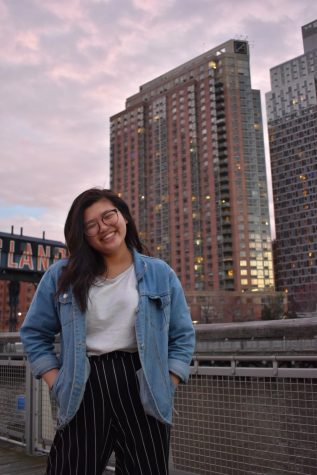
Chloe K. Li (she/her/hers) is a junior studying journalism and transcultural studies. She reports as much for the people as possible and believes that...


